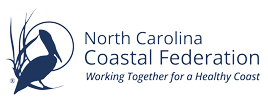Oysters are often considered just a tasty dish at one of your favorite restaurants, but they actually play a vital role in the health of the coastal ecosystems they inhabit. Here at the Coastal Federation, we break down their importance with the 3 F’s.
Food:
Oysters support a viable commercial and recreational fishery that is an important part of North Carolina’s cultural heritage and economy. Oyster reefs support the production of more crabs and finfish valued at over $62 million annually.
Filter:
As filter feeders, oysters remove harmful pollutants, sediment, and excess algae from the water. An adult is capable of filtering up to 50 gallons of water a day. As oysters filter, they also provide an important link in the estuarine food web by transferring nutrients from the surface (plankton) to the bottom (benthos).
Fish Habitat:
Oyster reefs provide essential habitats for a diverse collection of aquatic animals, including many important commercial and recreational fish species. One healthy oyster reef can be home to more than 300 different adult and juvenile organisms including southern flounder, shrimp, clams, and blue crabs.
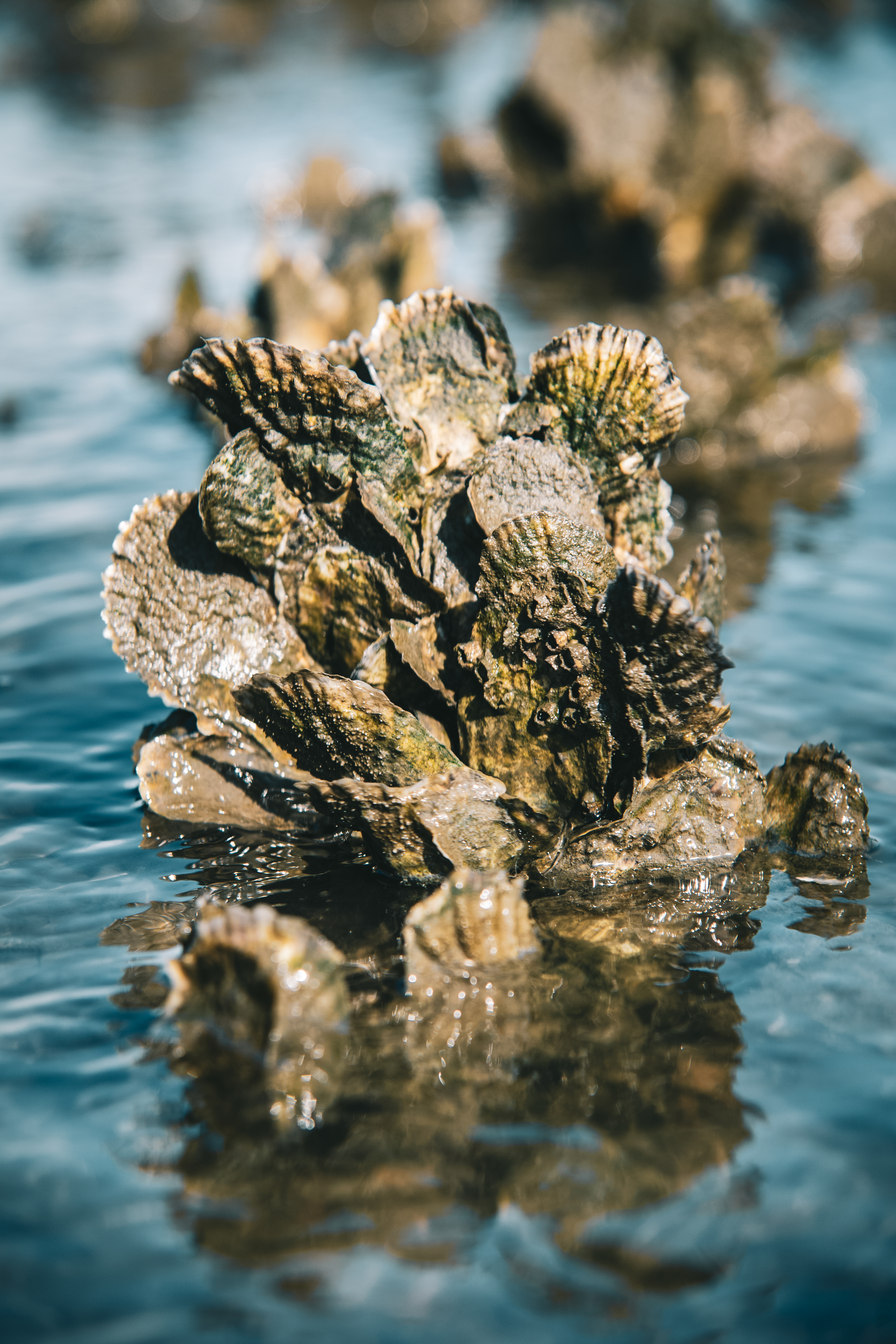
Get Involved:
Did you know you can help with oyster restoration efforts through the Federation’s oyster shell recycling program or by visiting one of the many amazing restaurants and other stops on the NC Oyster Trail? The NC Oyster Trail is a grassroots effort from people who love our state’s oysters.
Tour a working shellfish farm.
Do you know where your seafood comes from? Hop on a boat and learn how we grow oysters in North Carolina. Smell that salt breeze while you slurp down some of the most sustainable seafood on the planet.
Savor the coast’s distinct flavors.
Are you a fan of local foods? Taste our homegrown oyster rainbow — salty, sweet, and buttery shellfish. You can purchase our state’s oysters at a variety of markets and restaurants on the coast and inland, all featured on the NC Oyster Trail.
Discover the truth about local oysters.
Did you know N.C. oysters are available year-round? Wild oyster season starts October 15 but farmed oysters make it possible for you to enjoy oysters anytime. Get educated on how you can support a healthy coast and bountiful seafood for years to come.
Find all of the different stops you can visit along the trail by visiting their website, here.
Recycle your shells!
The Coastal Federation is working to restore wild oyster populations by recycling oyster shells and putting those shells back into the water. It’s a critical step in ensuring that North Carolina’s coastal ecology and economy continue to thrive. Shell recycling partners are a crucial part of the Federation’s recycling efforts, and there are several resources available to help support shell recycling.
You can find the closest oyster shell recycling location to you by taking a look at our map of drop locations around the coast.
Did you know?
In the state of North Carolina, it is illegal to dispose of oyster shells in landfills or use them as mulch for landscaping since they are needed for reef building in our sounds.
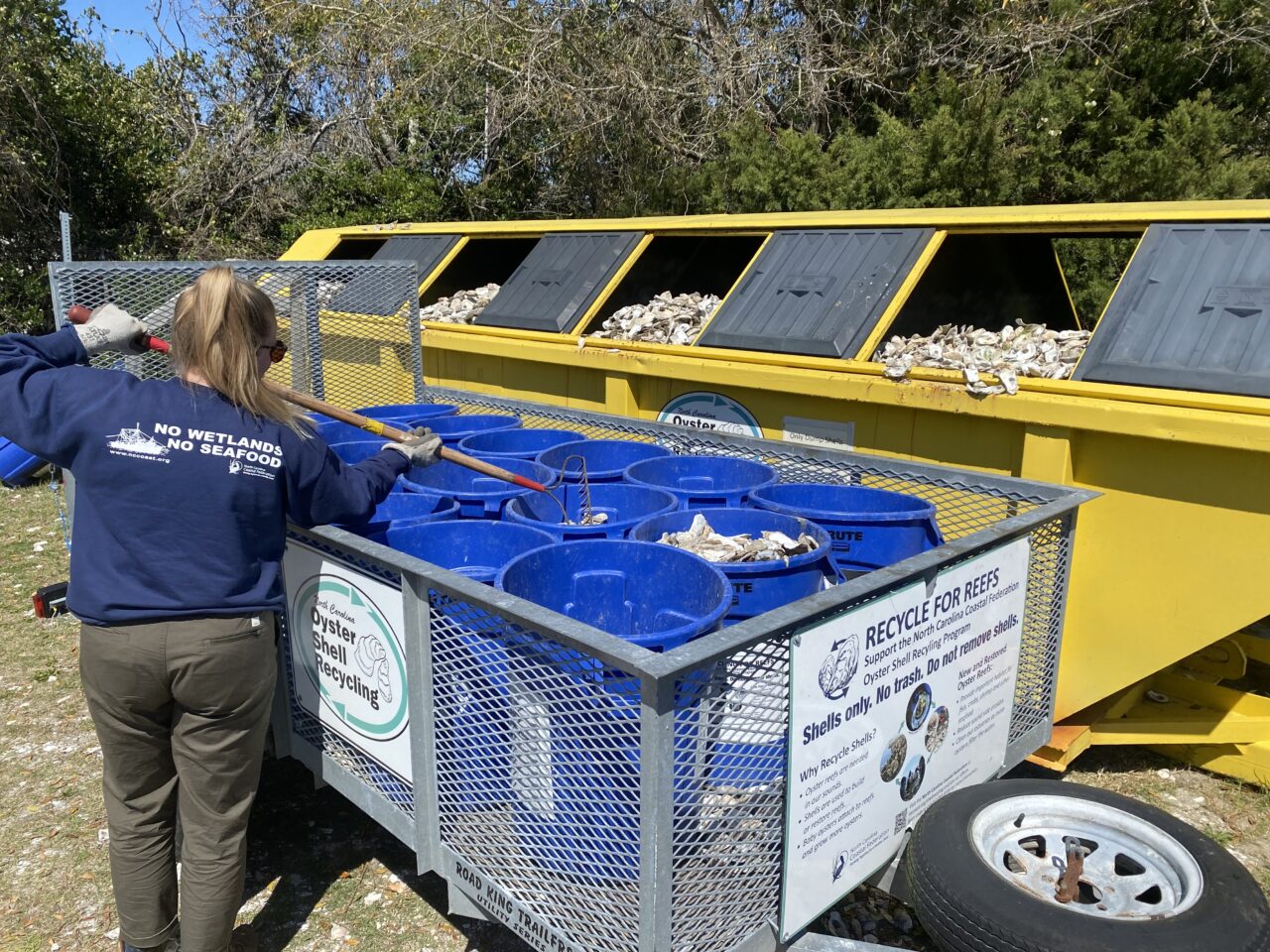
Recipes
Oysters can be enjoyed in a variety of ways throughout the year, whether for a romantic Valentine’s Day dinner, served on the half shell at your Super Bowl party, or gathered around a fire during an oyster roast. We consulted our oyster experts at the Coastal Federation, and they shared their favorite ways to enjoy oysters along with some of their best recipes.
Parmesan Garlic Oysters:
- Bake whole oysters in the oven at 350° Fahrenheit for about 10 minutes or until they open slightly.
- Remove one shell from each leaving oyster on the half-shell, lay out on a cooking sheet
- On each half-shell oyster place:
- 1 tsp butter
- 1 tsp fresh grated/chopped garlic
- 1/2 tbsp of grated parmesan
- optional-small chunks of cooked bacon or chives
- Bake half-shell oysters for another 10-15 mins until parmesan/garlic are a slight golden brown
- ENJOY!
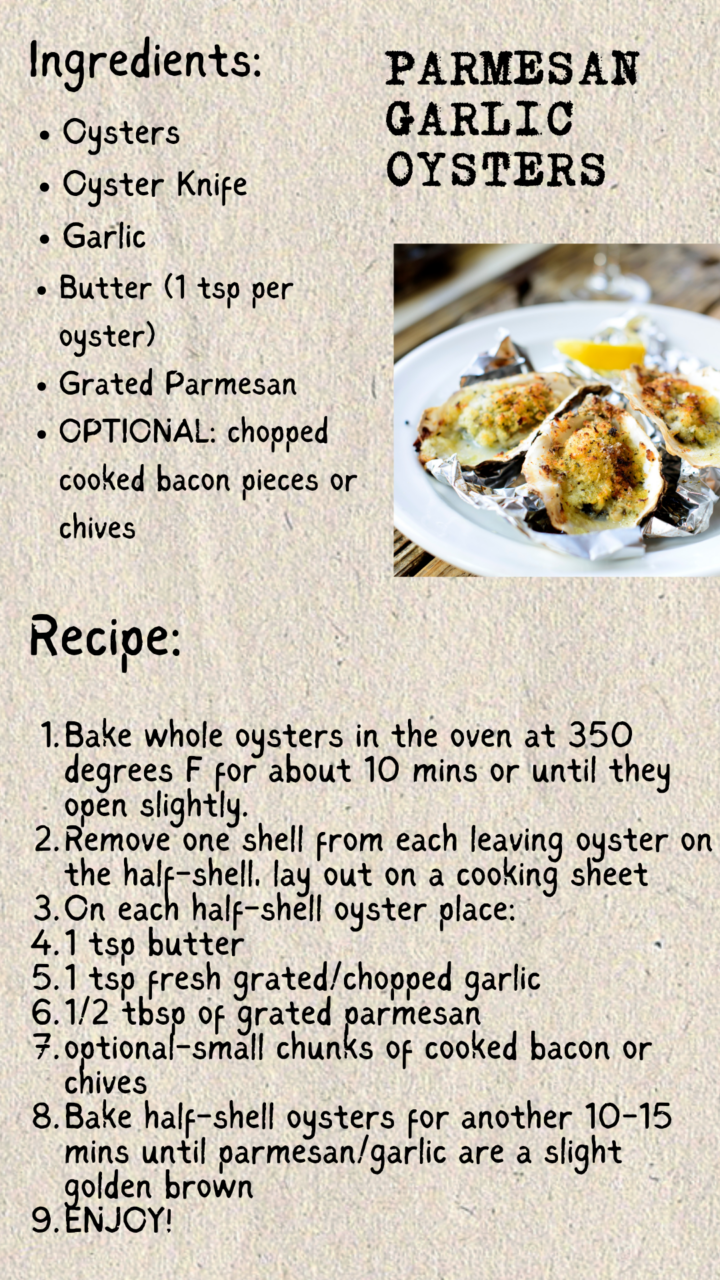
Oysters Rockefeller:
- Shuck the fresh, washed oysters, reserving the “cup side” of the shell for baking (if using pre-shucked oysters note that 1 pint equals about 30 oysters and you will need roughly 2 dozen shells for baking)
- Place oyster meats in the refrigerator and preheat the oven to 450° F while preparing the creamed spinach.
Creamed Spinach:
- In a saucepan, melt the butter over medium heat. Add shallots and cook for about 4 minutes.
- Add Pernod and cook down for about 30 seconds.
- Add drained spinach, cream, flour, nutmeg, thyme, lemon juice, and red pepper sauce. Mix until well blended.
- 4. Stir in parmesan cheese. Remove from heat and allow to rest for 15 minutes.
Oysters:
- Place a bed of rock salt onto a baking sheet or heat-proof platter. The thickness of the salt bed will depend on how deep the cup of the oyster shell is.
- Gently press oyster shells into the bed of salt so that they are stable and place shucked oyster meat onto the shells.
- Using a teaspoon, scoop warm creamed spinach into the shell over chilled oyster meat.
- Drizzle about 1 tsp. Of additional heavy cream over the spinach mixture.
- Top each filled oyster with a square of gruyere cheese or grated cheese with a Microplane.
- Bake for about 12-16 minutes. The sauce will be bubbly and the cheese will just start to brown.
- Remove from oven and serve hot with lemon wedges and red pepper sauce.
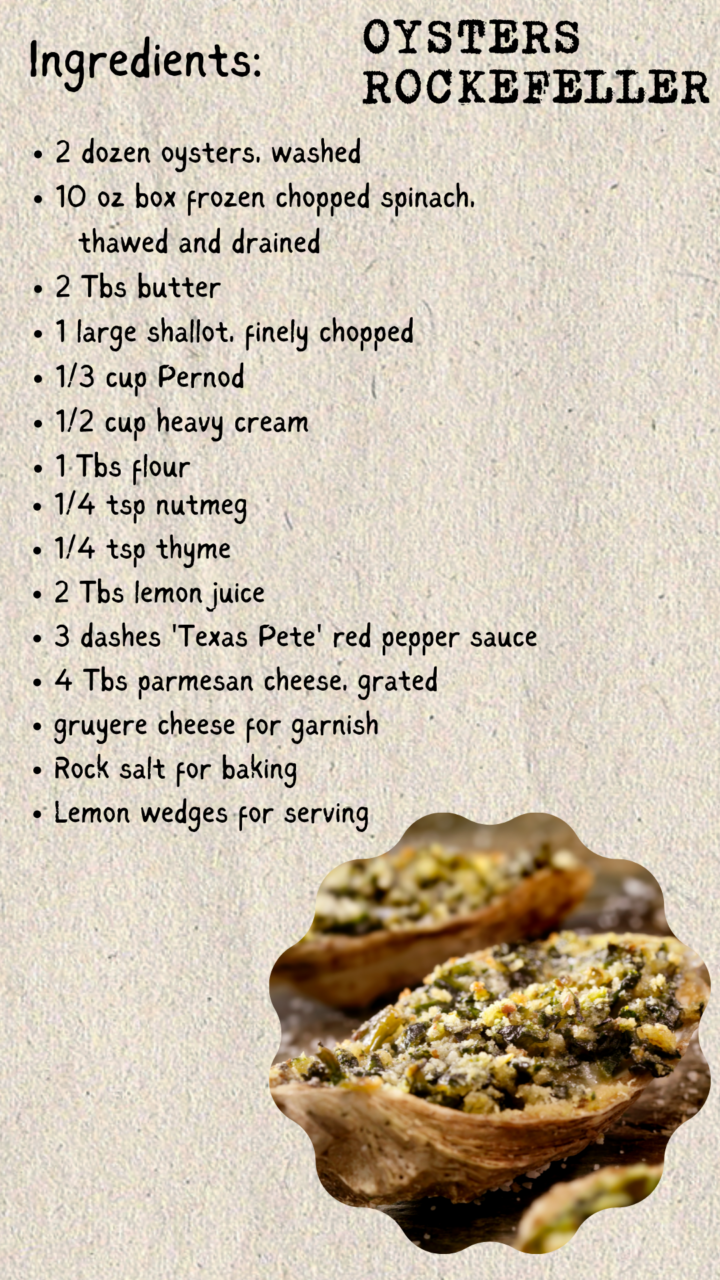
Whether you’re serving up steamed, fried, or raw oysters here are 5 sauces you need to try the next time you enjoy oysters! https://coastalreview.org/2021/01/our-coasts-food-5-easy-sauces-for-oysters/
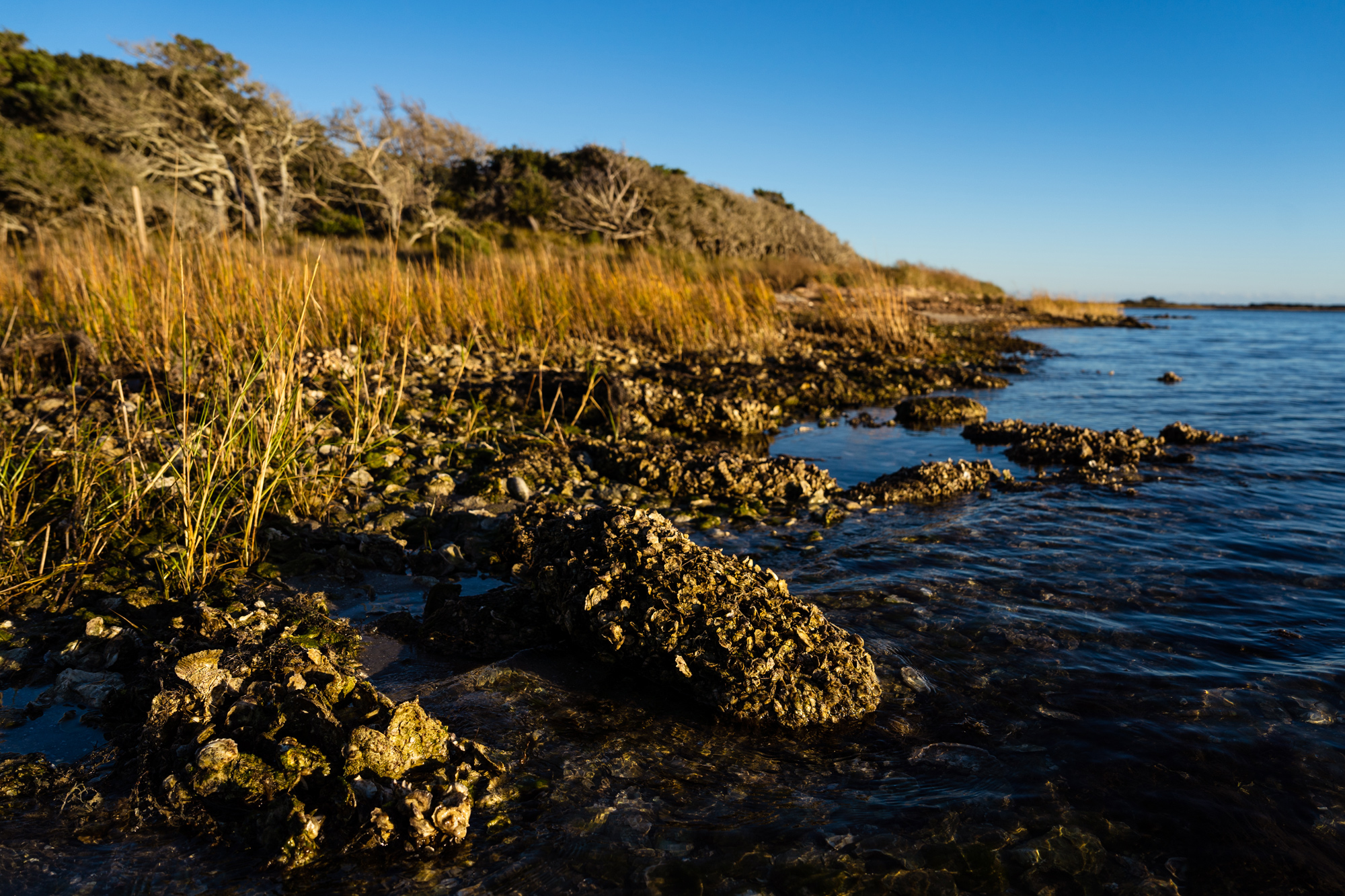
The Restoration Continues
You can support even more oyster restoration by Adopting an Oyster.
